The Sinterit Lisa is a cost-effective compact SLS 3D printer from the Sinterit's Lisa lineup. The youngest model in the series, it nonetheless features impressive print quality with both polyamide powder and flexible materials. It is available as a standalone printing machine or as a complete solution bundled with a sandblasting station and powder sieve for post-processing. It works as a plug-n-print device and is really low in price considering the technology. This makes SLS 3D printing accessible for both small-businesses and makers.
Despite its compact size, the Sinterit Lisa boasts ultra-durable structure and offers top-grade performance at decent speed, delivering high-resolution prints with intricate shapes and giving you more freedom. It includes a dedicated 3D printing slicer — a user-friendly, intuitive program that streamlines and facilitates the process. The open software enables the use of third-party materials. The responsive, easy-to-navigate interface allows for independent operation and convenient experience. With the Sinterit Lisa in your fleet, you will be able to produce high quality functional parts ready to work just after printing. No wonder that it has been chosen as the best desktop SLS 3D printer of Winter 2018-19 by All3DP. The device is successfully used in prototyping, industry and small-scale manufacturing. For example, it was applied to print rotor prototypes, padlocks, and more functioning products. Check out the video and keep reading for an in-depth review to discover unique properties of the selective laser sintering technology developed with new research methodologies.
A team of engineers has developed an innovative rotor to help firefighters to tame wildfires. They have 3D printed it using a Sinterit Lisa. Look at the detail. The surface is extremely polished and accurate. The sharp edges and the overall smoothness perfectly demonstrate the capabilities of the machine.
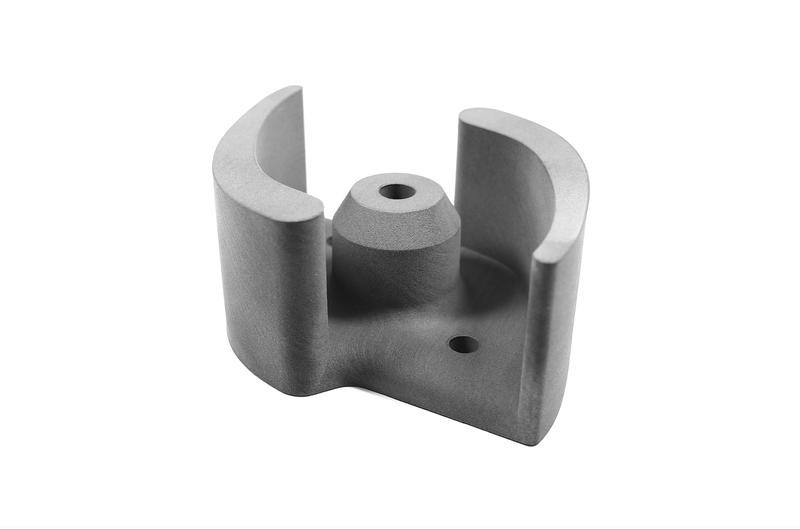
It can also print complex structures and movable parts ensuring high dimensional accuracy. This robotic hand looks perfect.
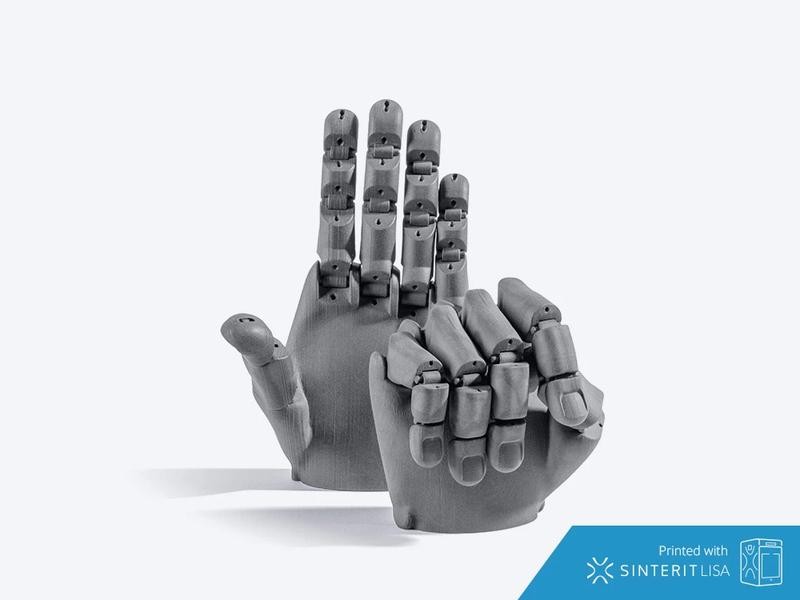
Thanks to the new quality components and accurate IR Laser Diode, the Sinterit Lisa can print with a layer height at 75 microns. To be exact, the layer thickness can be set at 0.075–0.175 mm. This way you can produce parts with smooth exterior surfaces and excellent precision without the need for support structures. SLS technology delivers quality parts with long durability and resistance to temperature variations.
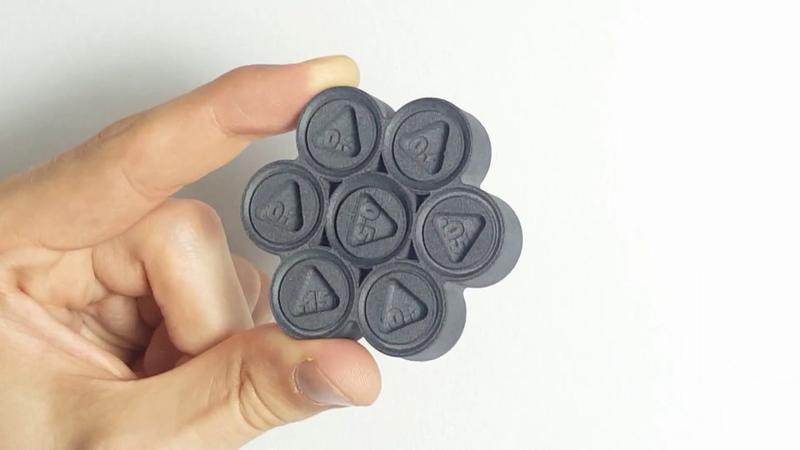
As a device based on SLS technology, the Lisa employs polyamide powders: the compatible materials for this printer include PA12 Smooth and TPU Flexa Grey powders. With these self-developed materials, the machine boasts the ability to produce top-quality printouts with complex geometry, while the manufacturer provides all the recommended printing settings for their consumables, so adjusting parameters won't be any trouble.
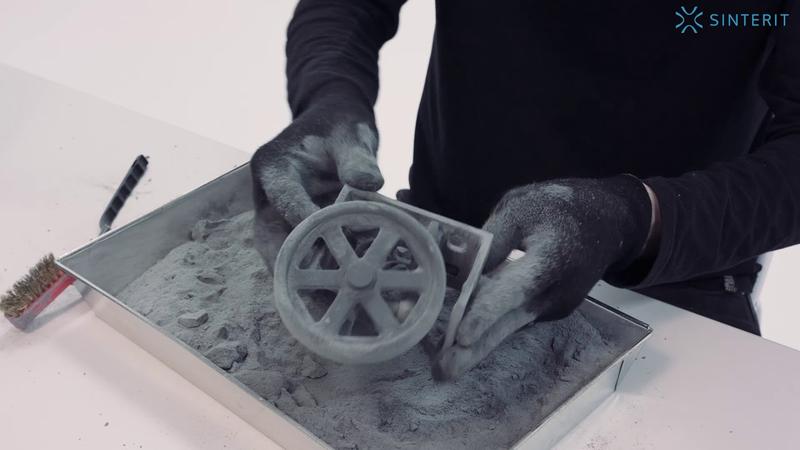
The Sinterit Lisa works with 20–100 microns powder and features an open environment, which means it is compatible with third-party materials. The maximum printing temperature is 374 °F (190 °C).
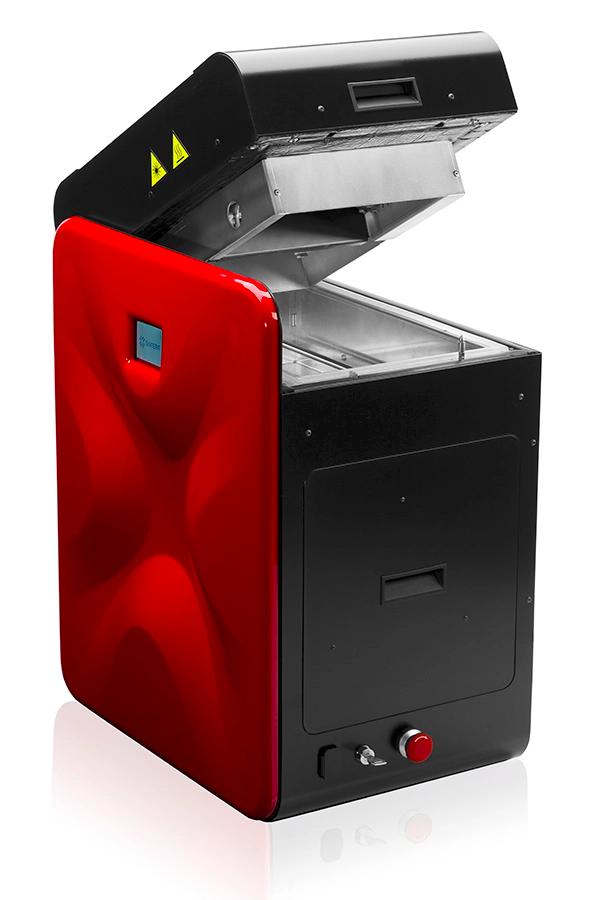
The build volume of the device is 5.9 x 7.9 x 5.9 inches (150 x 200 x 150 mm). It allows for the production of a variety of functional parts in one piece, nesting multiple models on a single print bed despite the compact build volume.
This SLS 3D printer is controlled either via PC or built-in touchscreen. The 4-inch user interface is easy to understand and will walk you step-by-step through the setting up and cleaning procedures. You will be able to manage and strictly control the sintering printing process with from the first use.
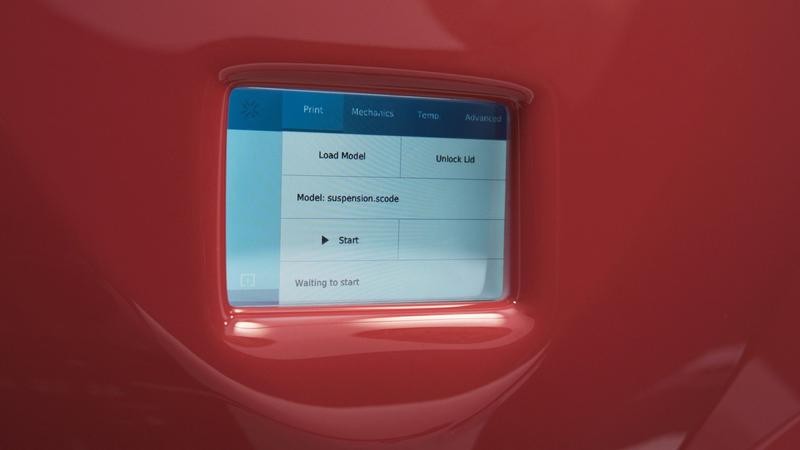
3D models can be printed from a computer via USB cable or USB pen drive. You can constantly check the print status via the built-in camera.
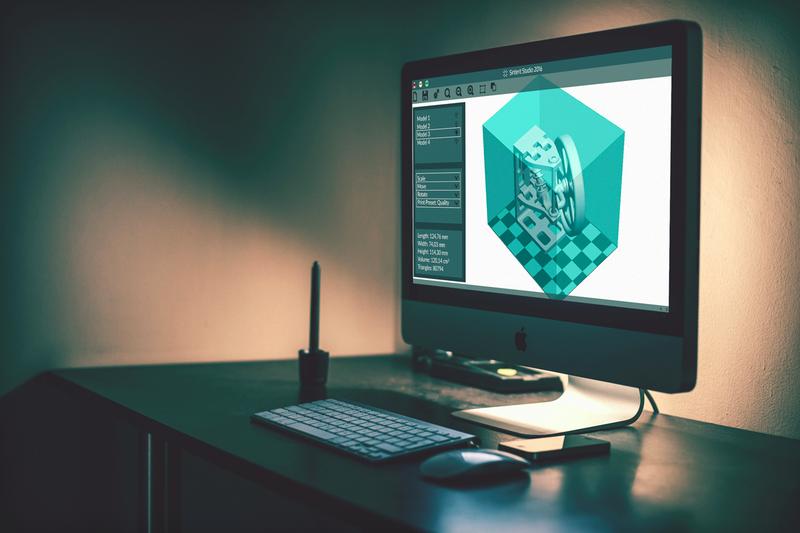
The device comes with an in-house-developed software for the series, Sinterit Studio. The program is available in different versions. It is easy-to-use and user-friendly, allowing you to fine-tune printing parameters and arrange the 3D models on print beds with more freedom. It also enables monitoring the print status in real-time. The software works with 3D files in a variety of common 3D formats. It is available for Windows.
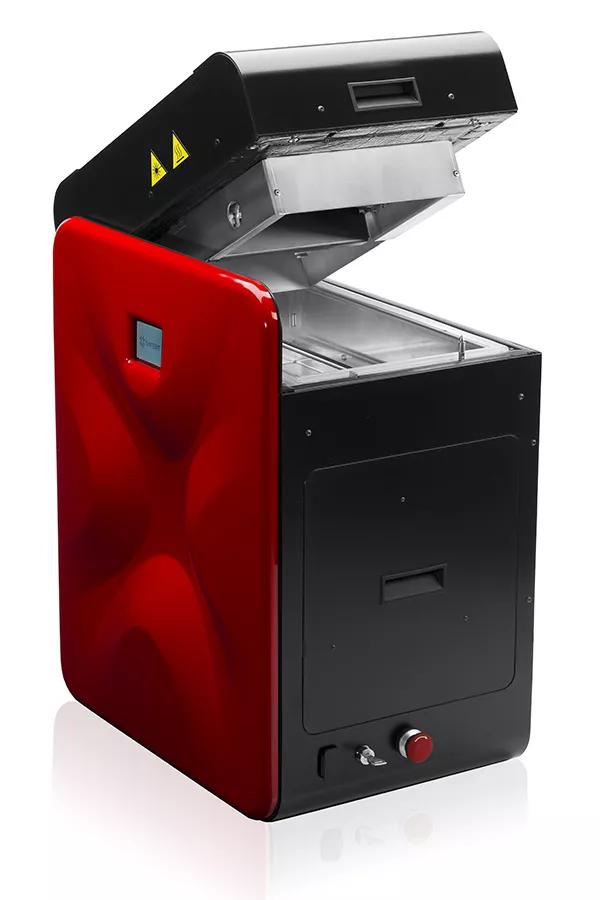
For some items, package content may change. In case of any questions, please get in touch.
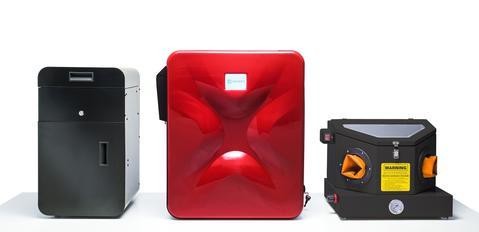
The Sinterit Lisa has an all-red, shiny case. Its stylish look makes it ideal for industrial design, rapid prototyping, and small-to-medium production.
The outer dimensions are 25.6 x 21.7 x 15.7 inches (650 x 550 x 400 mm). The device weighs 77 lb (35 kg). The material system is stored inside the printer.
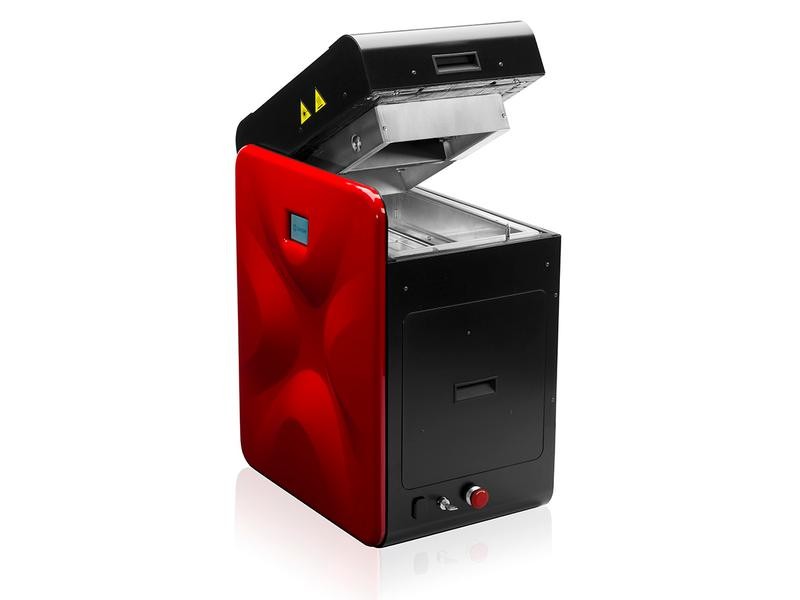
The price for the Sinterit Lisa SLS 3D printer is $15,490.00, which is reasonable considering its functionality.
Update your browser to view this website correctly. Update my browser now